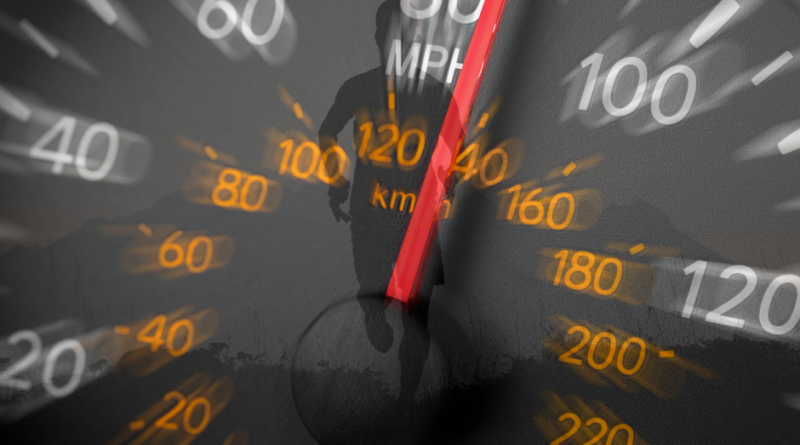Use Speed to Pace Ultra Runs : A new Perspective
In the world of ultra running, precision and consistency in pacing are crucial for success. Traditionally, runners have relied on pace (min/km or min/mile) to gauge their speed. While effective for running track and flat courses, using speed (km/hr) can simplify your strategy and reduce mental fatigue during ultra marathons. This shift offers a fresh perspective on pacing, making race strategy more intuitive and performance more consistent. In this article, we’ll explore the benefits of using speed over pace and how it can simplify the mental calculations needed to reach the next point, aid station, or finish line.
The Case for Speed
Simplified Mental Calculations
Using speed simplifies the mental calculations needed to estimate how long it will take to reach your next point, whether it’s an aid station or the finish line. With speed, you can directly convert distance to time, reducing the cognitive load during the race.
- Direct Distance-Time Conversion: If you’re running at 10 km/hr, you know you’ll cover 10 kilometers in one hour. This straightforward calculation eliminates the need for more complex mental gymnastics.
- Ease of Estimation: For example, if you have 15 kilometers to the next aid station and you’re running at 10 km/hr, it will take you 1.5 hours to get there. This simple division is much easier than converting pace to time.
Relief of Mental Stress
During an ultra marathon, reducing stress is crucial for maintaining focus and performance. By using speed instead of pace, you alleviate the mental burden of constant calculations.
Focus on Average Speed
Given the long distances in ultras, focusing on average speed rather than the fluctuating pace can provide a clearer picture of your performance.
- Noise Reduction: Pace can vary significantly with terrain and effort, creating “noise” that can be distracting. Average speed smooths out these fluctuations, providing a more stable and manageable metric to target.
- Segment Planning: Set upper, lower, and average speed targets for different segments of the course. This helps you maintain a consistent effort while adapting to the varying terrain and conditions.
- What You Measure is What You Get: By using average speed as your yardstick, you change your mental picture and intuitive strategy to focus on maintaining a targeted average speed. This mental shift helps align your efforts with your race goals.
- One Less Thing to Worry About: Simplifying your pacing strategy with speed gives you one less thing to worry about, helping you stay mentally fresh and focused on the race.
Easier Conversion for Different Distances
Running with speed makes it easier to convert time for various distances. Knowing your speed allows you to estimate your arrival time at different segments of the race, aiding in planning nutrition and hydration breaks.
- Intuitive Estimations: For example, running at 8 km/hr means you can cover 8 kilometers in one hour. This intuitive conversion helps you plan and adjust your race strategy effectively.
Alignment with Training Tools
Modern training tools and devices, such as GPS watches and running apps, can provide real-time feedback in speed. Utilizing speed as your primary metric can seamlessly integrate with your training data, making it easier to assess performance and adjust strategies during the race.
Transitioning to Speed
Familiarize Yourself with Speed Metrics
Start by understanding your personal speeds during training. For instance, know your tempo speed (e.g., 12 km/hr), marathon speed (e.g., 10 km/hr), and ultra speed (e.g., 8 km/hr). This helps set realistic goals and expectations for your races.
Adjust Your Training Plan
Incorporate speed metrics into your training plan. Use your GPS watch or running app to monitor your speed during training runs. Gradually adjust your ultra workouts to focus on maintaining a consistent speed rather than hitting specific paces.
Use Speed-Based Intervals
Integrate speed-based intervals into your training routine. Instead of running a set distance at a specific pace, run for a set time at a specific speed. For example, run for 5 minutes at 12 km/hr, followed by a recovery period. This will help you mentally shift to maintaining a consistent speed over varying durations.
Practice on Different Terrains
Practice maintaining your target speed on different terrains. This will help you develop the ability to adjust your effort while keeping a consistent speed, an essential skill for ultra running.
Analyze and Adjust
After each run, analyze your performance data. Review how well you maintained your target speed and make adjustments as needed. Over time, this will help you fine-tune your pacing strategy for race day.
Conclusion
Switching from pace to speed for ultra runs offers several benefits: simplified strategy, reduced mental stress, easier distance conversion, better alignment with training tools, and consistency across different terrains. By making this transition and focusing on average speed, you can enhance your performance and enjoy a more streamlined and stress-free approach to ultra running.


